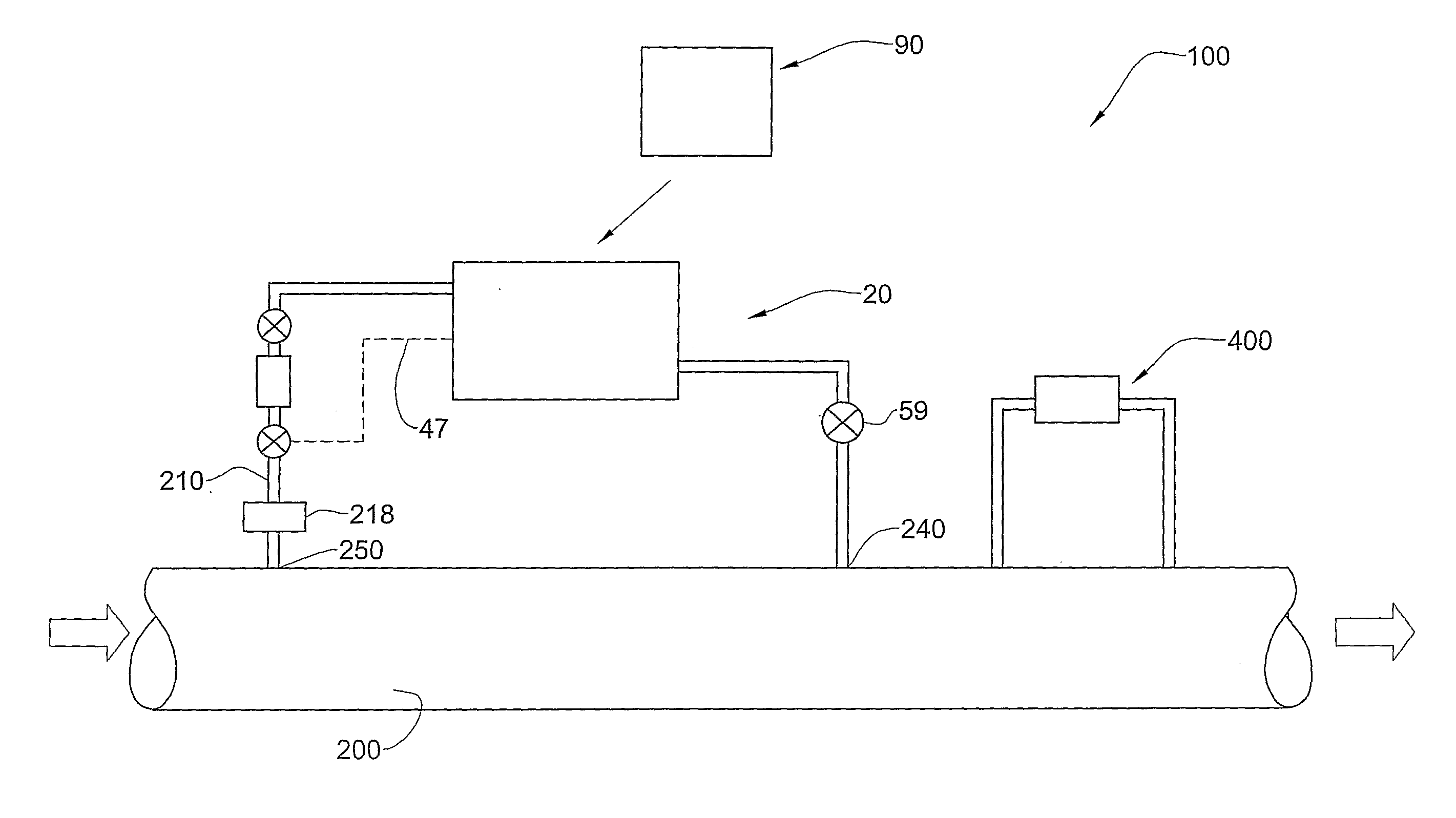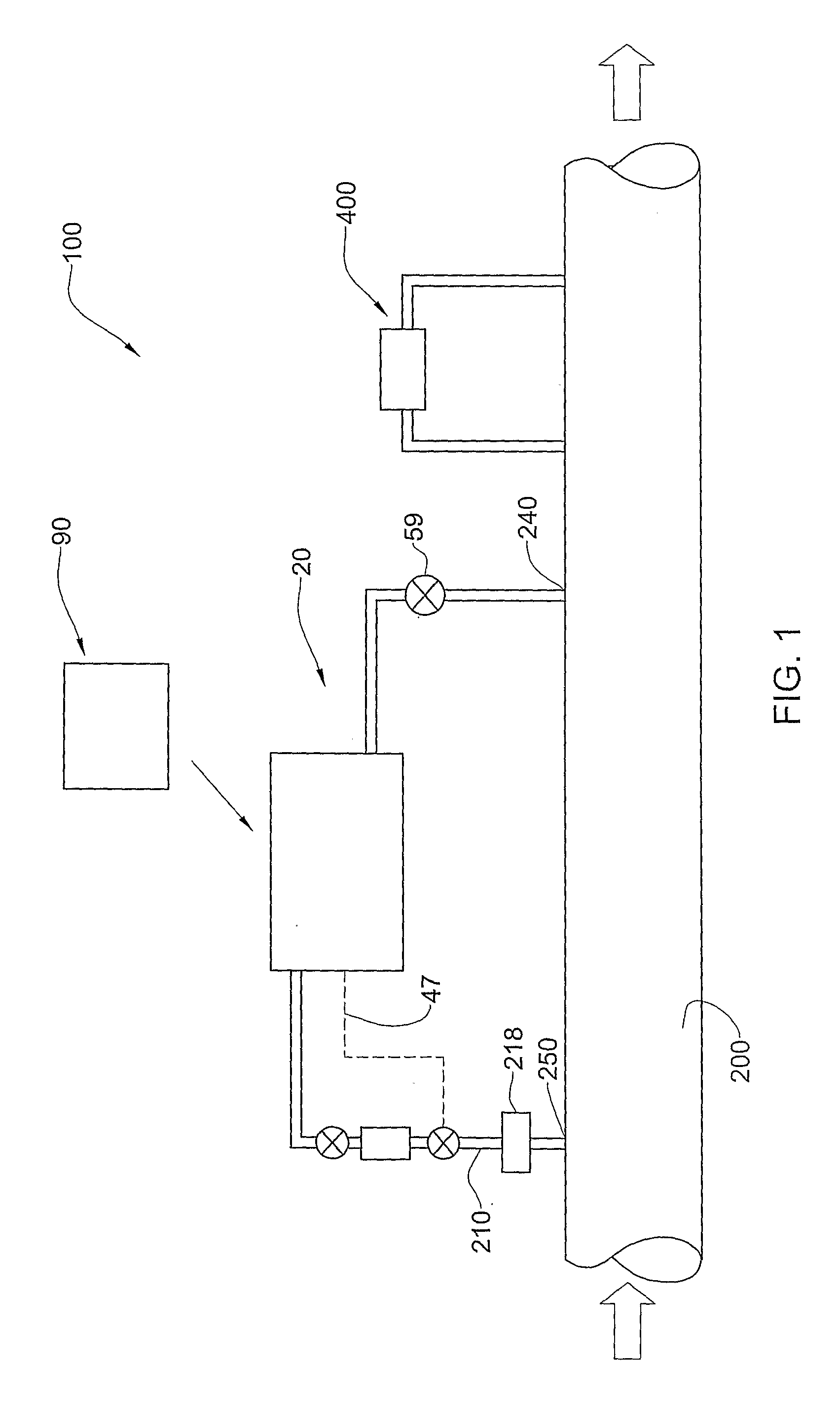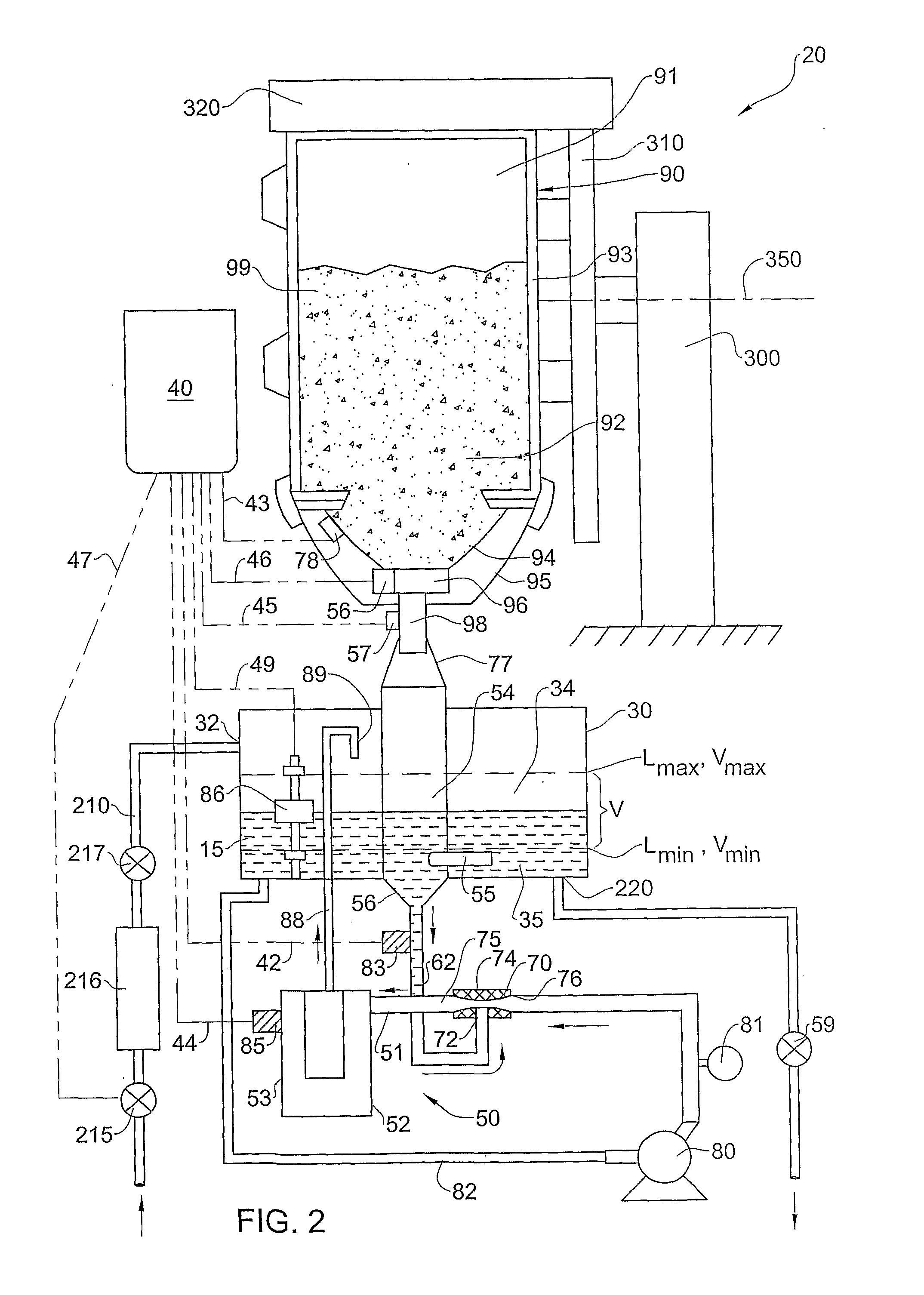Method, device and system for water treatment
a technology of water treatment and water treatment device, applied in the direction of dissolving system, dissolving, separation process, etc., can solve the problems of not being commonly available in rural communities, affecting the safety of drinking water, and affecting the quality of drinking water
- Summary
- Abstract
- Description
- Claims
- Application Information
AI Technical Summary
Benefits of technology
Problems solved by technology
Method used
Image
Examples
example 1
[0166]NaDCC [CDB-56, Clearon Corp., USA] is used as the water treating agent in accordance with the water treating system described with respect to FIG. 1.
[0167]A water treating system in accordance with this particular example may be defined by the following parameters:[0168]it is designed so as to treat 150-300 m3 water / hour with residual chlorine generated from NaDCC at an amount of 0.5-0.7 ppm (ca 1-1.2 ppm NaDCC.2H2O that contains 55.5% available chlorine).[0169]The hopper 95 containing the powder dosing device and knocker is mounted on a pre-packed package comprising 50 kg of dry granulated NaDCC and the resulting ensemble is then mounted on the special rack, above the vessel 30;[0170]for initiating the system 3-4 liters of fresh untreated water are introduced into the dispensing / storage vessel with approximately 4 liters being the Lmin in this particular, non-limiting example.[0171]at each preparation cycle 225 g of NaDCC per 2.25 1 of water are introduced into the receiving ...
example 2
[0176]A water supply of 500 m3 / h is disinfected by addition of 2 ppm residual chlorine. The supply is active over a 6 hour period per 24 hours while during the remaining 18 hours, the system is on stand-by mode. Accordingly, during the active mode of the system, the hourly requirement of chlorine is 1 kg / h (2 mg / l or 2 g / m3) or 1.8 kg / h NaDCC (i.e., just over 10 kg per day of NaDCC is used).
[0177]The concentration of the water treatment solution is maintained as in Example 1 (10% NaDCC). Thus, an hourly feed of the water treating agent of 18 l / h is supplied. For better performance, a supply of 4.4 kg / h NaDCC is set together with a 40-45 l / h water. As a result, a solution concentration of 10% is obtained. The volume of solution V being ca 6 liters, meaning that 3 cycles of preparation of water treating agent are needed every hour.
[0178]The 50 kg package is replaced, in the above conditions, after a calculated 4 or 5 working days (the supply rate is just over 10 kg / day, thus the packa...
PUM
| Property | Measurement | Unit |
|---|---|---|
| temperature | aaaaa | aaaaa |
| temperature | aaaaa | aaaaa |
| crystallization temperature | aaaaa | aaaaa |
Abstract
Description
Claims
Application Information
 Login to View More
Login to View More - R&D
- Intellectual Property
- Life Sciences
- Materials
- Tech Scout
- Unparalleled Data Quality
- Higher Quality Content
- 60% Fewer Hallucinations
Browse by: Latest US Patents, China's latest patents, Technical Efficacy Thesaurus, Application Domain, Technology Topic, Popular Technical Reports.
© 2025 PatSnap. All rights reserved.Legal|Privacy policy|Modern Slavery Act Transparency Statement|Sitemap|About US| Contact US: help@patsnap.com



